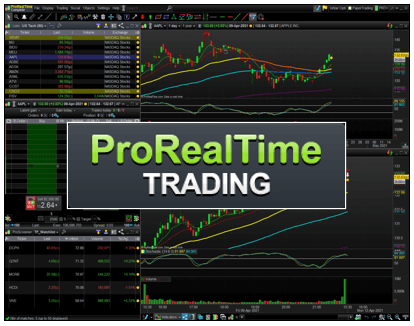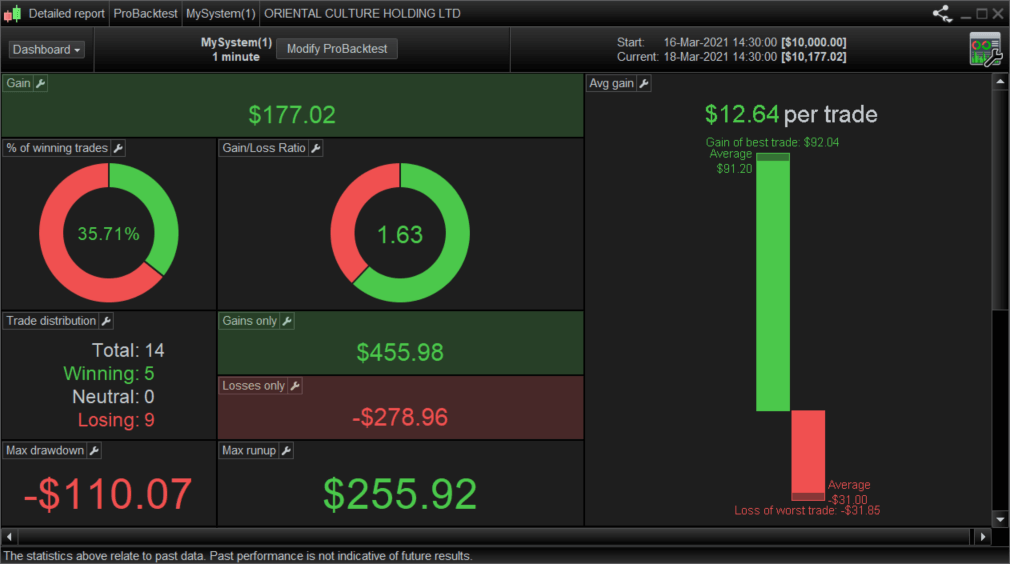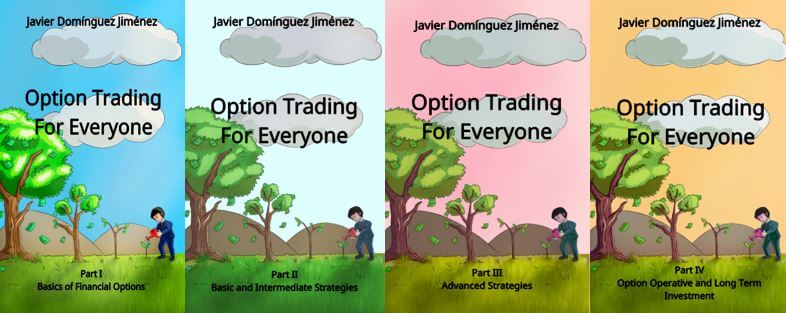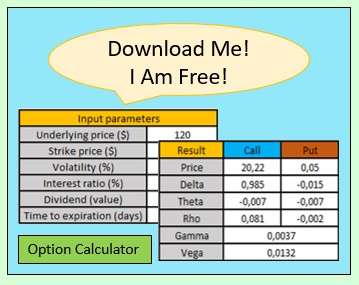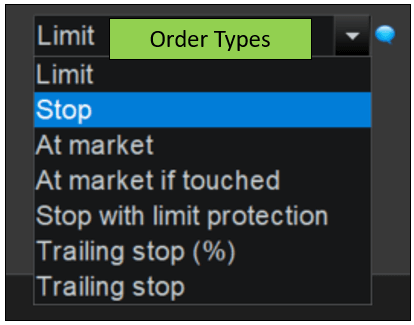Defining a Profitable Stock Trading System – Tools, Tips, and Tricks
Using a stock trading system is crucial if we want to trade in the stock or the option market because it will help us define which stocks to pay attention to and which stocks to ignore.
In this article, we are going to be reviewing what is a trading system, how to design it, and how to backtest with an automated trading system and using the ProRealTime trading platform.
Let us begin!
Table of Contents
What is a trading system?
A stock trading system is a set of rules we define in order to help us trade in the stock market with the idea of profiting over time.
Typically, a trader will define his/her own stock trading system, creating its rules and changing the different parameters of the system until they find a solution that satisfied them and makes them feel comfortable when trading.
We will be deepening more about this in a moment, but first, we will be learning how to design a stock trading system to help you understand this better.
Basics of the stock trading system design
The key to starting the design of a stock trading system is to use the different technical analysis indicators available in the market.
Abiding by the rules of the technical indicators we may use, we will define the entire behavior of our trading system.
A simple stock trading system design will have at least two types of technical indicators that will help us define what is happening in the stock market: a trend following indicator and an oscillator.
Using a trend following indicator, we will be able to define the current direction of the stock price, and with the oscillator, we will be able to spot weakness points that will help us jump into the trend and make money with it.
Do you need a fast Stock Trading Journal that helps you make better decisions?In this short video, we will show you how to know in detail the results of your trading, how to get an estimate of the number of stocks to trade based on risk, and how to drastically reduce the time it takes to record your trades with this Journal |
For example, we are going to be using a combination of the smoothed stochastic indicator with a 200-period exponential moving average to define a system, just like we saw in this article here.
With these two tools, we will have a quite simple stock trading system design.
The next step we need to take is to learn the exact behavior of the technical indicator that we have added and study the complete system. If you want to deepen more about how to use the stochastic indicator, we have it documented here.
After learning how our indicators work, the next thing we need to do is to set up the rules of the stock trading system.
We need to define when we are going to enter a trade, when we will exit a winning position, and where we will set our stop loss order.
That would define the rules of the trading system, but now, we need to make sure that they are good enough.
How do we know if our stock trading system design is valid or not?
The only way to know if our trading system is good enough is by backtesting the rules. In this case, we will backtest our simple stock trading system design of the stochastic indicator plus the exponential moving average.
To correctly backtest our stock trading system, we need to check one by one every single trading opportunity we may find in the historical data and apply our rules of entry, exit, and stop loss points.
For example, we will open a long position when the exponential moving average is bullish, and the smoothed stochastic indicator turns positive when it is under 20 points. The entire strategy is defined here if you want to learn more.
After setting our profit and loss point, we need to check if the trade was profitable or not and then write down the result. We should repeat this process until we have covered at least 100 trades.
Our aim is not to win every single trade with the system but win at least 60% or 70% of the trades with a profit-loss ratio of about 2 or 1.5. That would make a good enough stock trading system.
Of course, as you might start to think, repeating this process 100 times is quite a bit tedious. However, some tools will help us to backtest any stock trading system design by automating them.
How to build an automated trading system to backtest out results?
One of the great things about some trading software like ProRealTime is that it will allow us to create our automated trading system in the stock market that will automatically backtest the results.
The only thing we need to do is to program the rules of the stochastic stock trading system design and define the stop loss, entries, and profits by a percentage or a quantity, and they will do the rest for us.
For example, we will run the automated trading system defining an entry point at the opening of the next candle after the condition has met. We will close the trade if we find a 6% profit or a 2% of loss. Let us take a look at the backtesting to see what happens.
As you can see, we have collected the data from 14 trades instantaneously. In the backtest, we can see the percentage of winning trades is quite low in this case. However, due to the risk management we have set, we have a winning system.
Remember that we can change the profit, loss, and entry points metrics to vary these percentages. Our aim should be to have at least 60% or 70% of winning trades, creating the best trading system for our purposes.
That is how we can create an automated trading system in the stock market and backtest it before trading.



